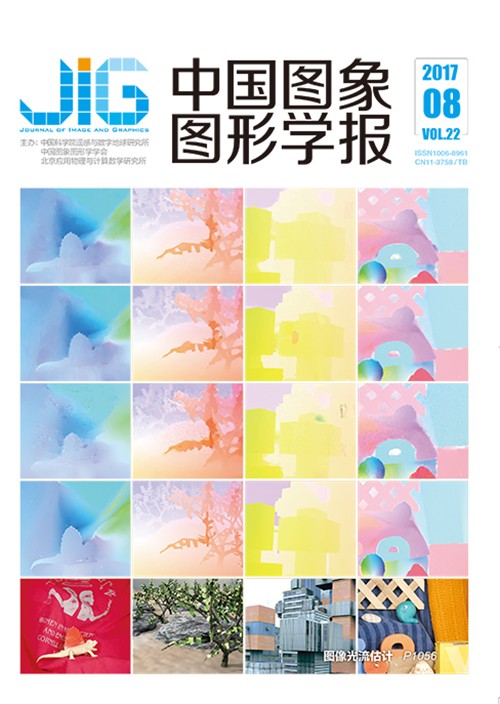
深度卷积神经网络特征提取用于地表覆盖分类初探
摘 要
目的 地表覆盖监测是生态环境变化研究、土地资源管理和可持续发展的重要基础,在全球资源监测、全球变化检测中发挥着重要作用。提高中等分辨率遥感影像地表覆盖分类的精度具有非常重要的意义。方法 近年来,深度卷积神经网络在图像分类、目标检测和图像语义分割等领域取得了一系列突破性的进展,相比于传统的机器学习方法具有更强的特征学习和特征表达能力。基于其优越的特性,本文进行了深度卷积神经网络对中分辨率遥感影像进行特征提取和分类的探索性研究。以GF-1的16 m空间分辨率多光谱影像为实验数据,利用预训练好的AlexNet深度卷积神经网络模型进行特征提取,以SVM为分类器进行分类。分析了AlexNet不同层的特征以及用于提取特征的邻域窗口尺寸对分类结果的影响,并与传统的单纯基于光谱特征和基于光谱+纹理特征的分类结果进行对比分析。结果 结果表明在用AlexNet模型提取特征进行地表覆盖分类时,Fc6全连接层是最有效的特征提取层,最佳的特征提取窗口尺寸为9×9像素,同时利用深度特征得到的总体分类精度要高于其他两种方法。结论 深度卷积神经网络可以提取更精细更准确的地表覆盖特征,得到更高的地表覆盖分类精度,为地表覆盖分类提供了参考价值。
关键词
Land cover classification with features extracted by deep convolutional neural network
Zhang Wei1,2, Zheng Ke1, Tang Ping1, Zhao Lijun1(1.Institute of Remote Sensing and Digital Earth of Chinese Academy of Sciences, Beijing 100101, China;2.University of Chinese Academy of Sciences, Beijing 100049, China) Abstract
Objective Monitoring land cover information is fundamental for environmental change studies, land resource management, and sustainable development;it plays an important role in the global resource monitoring and change detection.Improving the land cover classification accuracy on moderate resolution remote sensing images is considerably significant.For land cover classification, some researchers have combined the texture features with spectral values.The classification accuracy has improved;however, the ability of using texture features to improve the classification accuracy is still extremely limited.Extracting expressive features is the key to remote sensing image classification.In recent years, the deep convolutional neural network (CNN) has made a great breakthrough in the fields of image classification, object detection, and image semantic segmentation;it has a remarkable capability for feature learning and representation compared with the traditional machine learning methods.This feature extraction capability of CNN in improving the accuracy of land cover classification should be investigated.Method Given the superior characteristics of CNNs, this paper conducts an exploratory research on the classification of moderate resolution remote sensing images using features extracted by deep CNN.In detail, the GF-1 multispectral remote sensing imagery with 16 m resolution is used as experimental data, and the pretrained AlexNet is used for feature extraction using the support vector machine (SVM) as the classifier.The proposed method has three steps:1) Preprocessing:The image that is inputted to AlexNet must include three bands, because the pretrained AlexNet is trained on ImageNet.Thus, the principal component analysis is applied to the GF-1 four-band multispectral image to derive the first three principal components.2) Deep feature extraction:For each pixel, the surrounding image patch with a fixed window size is initially upsampled to 224×224 by the nearest neighbor interpolation method to conform to the required input size of the AlexNet model;the mean image of train set is then subtracted for normalization and is finally fed into the pretrained AlexNet to extract the deep features of convolutional layers or full-connected layers.3) Classification:The extracted deep features are fed into the SVM classifier with a linear kernel.The capability of feature representation for various layers of AlexNet and the effectiveness of different window sizes are evaluated and analyzed.Furthermore, the comparisons with classification results, which are obtained by spectral values and spectral-texture features, are conducted to assess the potential of the proposed method.Result Experimental results include the following:1) Features of full-connected layers are more effective than those of convolutional layers, and the best feature extraction layer of AlexNet is the 6th full-connected layer.2) The window size for feature extraction has an influence on classification results.Accuracy initially increases and then decreases in the end with the increase of size.The best window size is 9×9.3) The classification accuracy obtained by using deep features of AlexNet is higher than those performed using only spectral values and spectral-texture features for classification.4) The proposed method has a drawback because of the ReLU nonlinear activation function and max pooling in AlexNet;moreover, a phenomenon of expansion or shrinkage of actual outline exist for the classes with extremely high or extremely low spectral values.Conclusion In conclusion, the deep CNN can extract accurate features for land covers and obtain high classification accuracy, providing a valuable reference for land cover classification.In the future work, some further measures, such as selecting effective activation function and pooling method to build and train a new CNN model for land cover classification, must be considered to improve the proposed method.
Keywords
convolutional neural network(CNN) AlexNet feature extraction land cover classification support vector machine(SVM)
|



 中国图象图形学报 │ 京ICP备05080539号-4 │ 本系统由
中国图象图形学报 │ 京ICP备05080539号-4 │ 本系统由